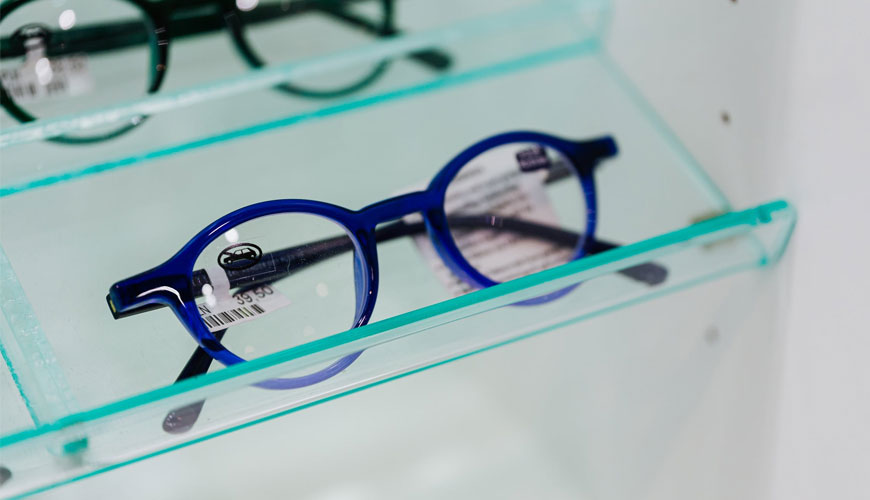

EUROLAB laboratory provides testing and compliance services within the scope of EN ISO 12870 standard. International Standard EN ISO 12870 specifies the basic requirements for spectacle frames without lenses designed for use with all prescription lenses. Applies to frames at point of sale by manufacturer or supplier to retailer.

This International Standard is applicable to all spectacle frame types, including rimless mounts, semi-rimless mounts and folding spectacle frames. It can also be applied to eyeglass frames made from natural organic materials. ISO 12870 does not apply to full bespoke eyeglass frames or products specifically designed to provide personal eye protection.
Despite the abundance of ophthalmic lenses and the availability of corrective surgery, millions of consumers still choose glasses as their vision correction device. For many wearers, glasses are an essential element of personal style and an accessory they wear most of their waking time. Quality, safety and durability requirements for glasses are high due to the conditions of use: prolonged contact with the skin; proximity to eyes and face; exposure to aggressive substances such as sweat, perfumes and cosmetics.
The applicable requirements for different types of eyeglass frames are given. All spectacle frame types covered by this International Standard will conform to the requirements defined as "general". Requirements marked with an “O” are optional, but may be legally required in some countries.
When tested under inspection conditions, areas of the spectacle frame that may come into contact with the wearer by design or accident should be smooth, without sharp protrusions, and all edges.
Spectacle frames will be designed and manufactured in such a way that the health (and safety) of the wearer will not be compromised under the conditions and when used for their intended purpose. The risks posed by substances leaking (migrating) from the device and which may come into contact with the skin for a long time will be reduced to a feasible level by the manufacturer as soon as possible and within the period of use. any appropriate regulatory requirement. Particular attention will be paid to substances known to be allergenic, carcinogenic, mutagenic or toxic to reproduction.
Reactions can be caused by excessive pressure, for example due to poor fit, chemical irritation or allergies. Rare or id iosyncratic reactions can occur in any material and indicate the need with single to avoid certain types of frameworks.
If the spectacle frame is manufactured using materials not previously used in spectacle frame manufacture (e.g. plastics, alloys, coatings or pigments), the standard assessment may be made according to the appropriate International Standards, either using the spectacle frame itself or using research using the same material in other medical devices.
When the spectacle frame with test lenses is tested, the difference between the ends of the sides shall not change more than +6 mm or -12 mm. For small spectacle frames where the edge edge is less than 100 mm from the back strip of the front, these tolerances are reduced to +5 mm or -10 mm.
Among the services provided by our organization within the framework of material testing services, there are also EN ISO 12870 standard tests. Do not hesitate to contact our laboratory EUROLAB for your testing and certification requests.
To get an appointment, to get more detailed information or to request an evaluation, you can ask us to fill in our form and reach you.